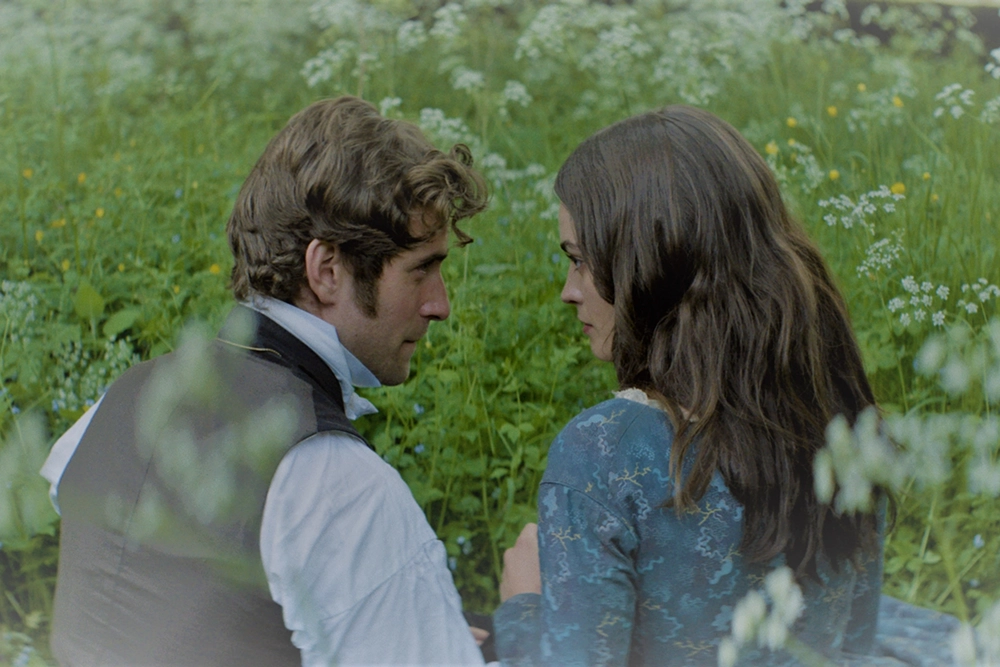Emily Brontë, most famous for penning the novel “Wuthering Heights,” is the subject of the biographical film “Emily,” directed and written by Frances O’Connor (British-born Australian actress and star of such films as 1999’s “Mansfield Park” and 2003’s “Timeline”) in her directorial debut. The film aims high, wrestling with themes of personal freedom and religious hypocrisy amidst the ultra-Puritanical society of the early 1800s, but falls short in making Emily and her relationships captivating
The film begins as Emily Brontë (played by Emma Mackey) lays dying from Tuberculosis at the age of 30. On her deathbed, she flashes back to the last few years of her life and all the incidents and relationships that opened her heart and mind and led her to write “Wuthering Heights.”
A Conglomeration of Other Works
“Emily” seems like a mosaic assembled from an eclectic mix of other works. At times it feels like a tawdry bodice-ripper romance like “The Thorn Birds.” At other times it’s playfully fun and cheeky like Phoebe Waller-Bridge’s “Fleabag” or Amy Heckerling’s “Clueless.” There are even a couple scenes that are downright bone-chilling and feel like they were pulled from an old Hammer horror film from the 1970s.
I could never tell whether Emily was shy or whether she was just a misanthrope who disliked socializing with people. As I left the theater after seeing the film, I overheard a couple friends saying they thought she was autistic.

I don’t know if the real Emily Brontë struggled with social interactions as much as Emma Mackey’s version in this film, but it’s interesting seeing the differences between her and her sisters. Older sister Charlotte (Alexandra Dowling) is the most driven of the three, having no room for levity or even cracking a smile as she focuses on her studies and duties around the house. Younger sister Anne (Amelia Gething) is fun-loving, always optimistic, and exuberant, and much more supportive of Emily than Charlotte is.
Some Curious Elements About the Brontë Family
Emily seems to be a fusion of her two sisters. She’s not as grim as Charlotte but not as cheerful as Anne. There’s a wonderful symbiosis between the trio. When Charlotte chastises Emily and brings her down, Anne lifts Emily back up. When Anne gets too silly, Emily backs up Charlotte when Charlotte scolds Anne.
Emma Mackey lets Emily’s body language speak for her. When the Brontë family is having a party or they’re in church, Emily sits rigidly, barely moving other than nervously shifting in her seat or rolling her eyes at an insipid comment made by a person nearby. She emanates social anxiety.
The strangest aspect of the film is Emily’s relationship with her brother Branwell (Fionn Whitehead), who’s devilish and mischievous and, over the course of the film, helps Emily express herself and celebrate life. The way director Frances O’Connor films their scenes together, it seems like the pair have an almost incestual relationship, staring into each others eyes lovingly, frolicking in open fields and rolling in the grass together like young lovers. I personally felt the relationship between them was a bit TOO intimate, but it’s fun watching Emily start opening up and doing some boldly mischievous things after being influenced by Branwell.
Not a Home-Run, but a Solid Debut from Director Frances O’Connor
The other man in Emily’s life is William Weightman (Oliver Jackson-Cohen), a new arrival in town. He’s a religious man and an assistant to the town’s Vicar. Even though he’s the “romantic interest” of the film, he oddly seems to have less chemistry with Emily than Branwell does, and that ultimately brings the film down, because their scenes together, which should have been passionate and stirring, seem forced and bland.
Abel Korzeniowski’s score is beautiful and lilting, and one of my favorite things about the film is how the film punctuates major moments with a crescendo of booming music, alternating that with moments of complete silence. It’s symbolic of Emily’s anxiety and her internal struggle to break free of the societal chains that bound every woman in the early 1800s.
Even though I felt “Emily” wasn’t a total home run, it’s a solid debut from Director Frances O’Connor, and I look forward to seeing what she does next.
“Emily” is still playing in theaters, and is not currently available for streaming.